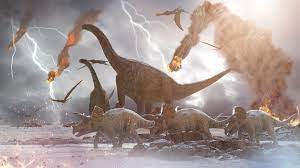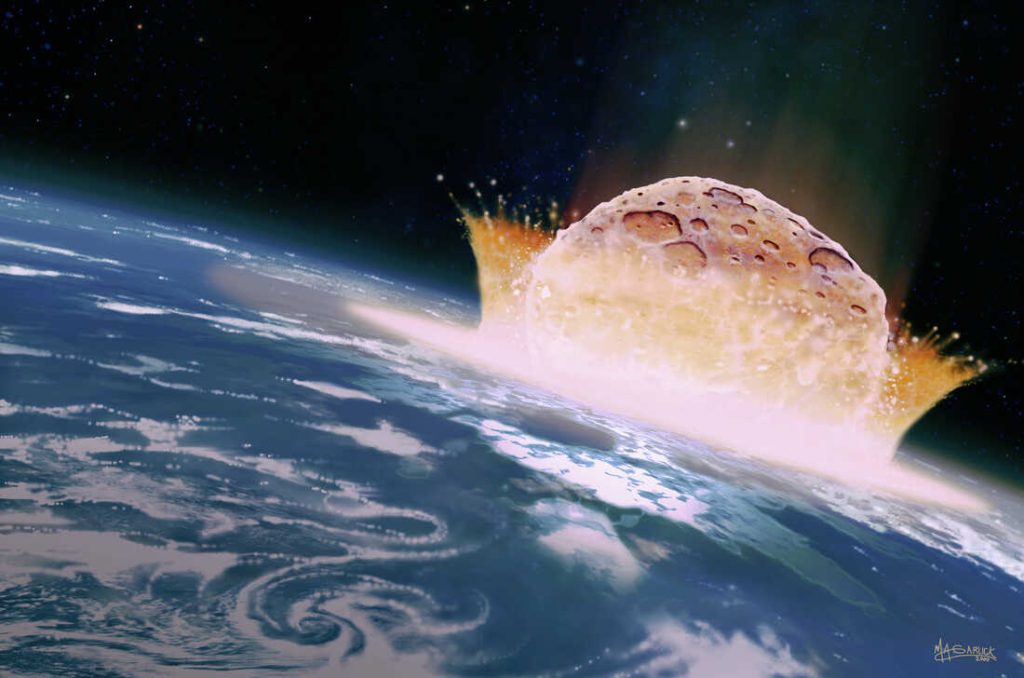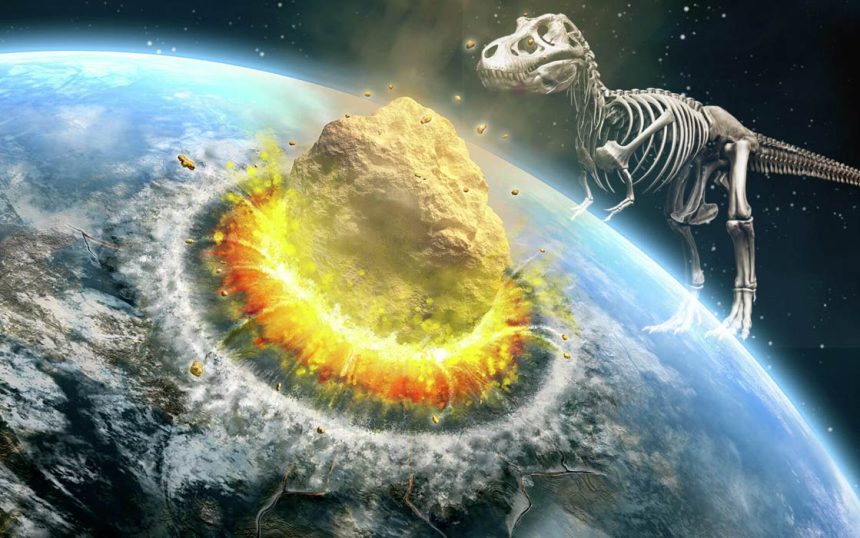A machine learning program has joined a heated discussion over whether volcanoes triggered dinosaur extinction long before the asteroid arrived. These volcanoes generated huge clouds of carbon dioxide and sulfur dioxide for 300,000 years before impact and another 500,000 years later. They were undertaking “pre-eruptive” degassing even while they weren’t actively erupting. CO2 heated the world, as do human emissions today. While SO2 cooled it by reflecting some of the sun’s energy into space.
The back-and-forth caused a climate whiplash, resulting in widespread extinction. So the asteroid wasn’t a lone Grim Reaper for the dinosaurs, but rather the final nail in the coffin. That is, according to the theory.

Scientists are still arguing how much of a part this volcanism played in the Cretaceous-Paleogene extinction-asteroid
As opposed to the obvious outrage of an asteroid crashing into the planet, a machine-learning computer model has now chimed in. Determining that the CO2 and SO2 gas required to induce dinosaur extinction is commensurate with the output of the Deccan Traps.
- Advertisement -
“Our findings specifically lend credence to the idea that volcanic activity was disturbing the atmosphere and climate way before the asteroid,” Dartmouth College computational geologist Alexander Cox explains.
Volcanoes did not always spew forth equal amounts of CO2 and SO2. An unbalanced mix resulted in a wacky climate seesaw that eventually wiped out creatures. A species may have adapted to rising temperatures only to be destroyed by lowering temperatures 50,000 years later, or vice versa.
Acid rain and ocean acidification would have resulted from the volcanism. These factors alone contributed to the extinction of plants, herbivores, and carnivores that fed on them. However, it also distorted the planet’s overall carbon cycle. For example, when the waters became more acidic, species like foraminifera, which build carbon shells, would have struggled to live.

Then there was the asteroid. The explosion and shock wave annihilated all neighboring species. To make matters worse, it collided with a sulfur-rich region of the Earth. Unlike the previous 300,000 years of more slow volcanism, the collision ejected all of the sulfur into the sky.
Not just microscopic particles of rock and glass, it produced a cloud that engulfed the Earth obscuring the sun. Climate anarchy had replaced climate chaos. “The Deccan Traps are still erupting after that event,” says Jennifer Kasbohm, a geochronologist at Yale University who studies volcanoes’ impact on climate change but was not involved in the new study.
The collision of the asteroid produced so much energy that it may have prompted greater volcanic activity at the Deccan Traps. The impact could have jolted the plumbing in the volcanoes, causing magma to rise to the surface. All of this has brought nuance to the discussion over asteroids vs. volcanoes. This new concept attempts to remove human biases and allow machines to conduct the number crunching. So far, it appears that both natural calamities played a role, in a sort of one-two blow.



